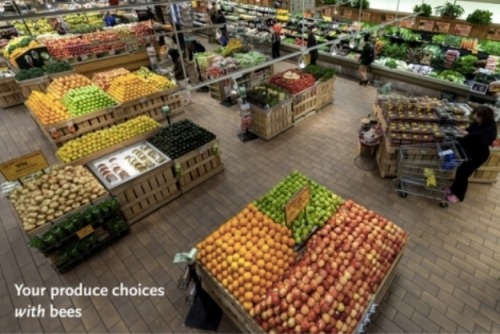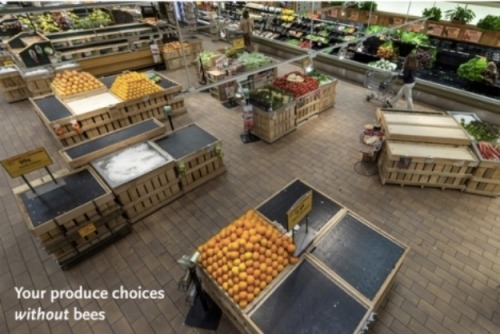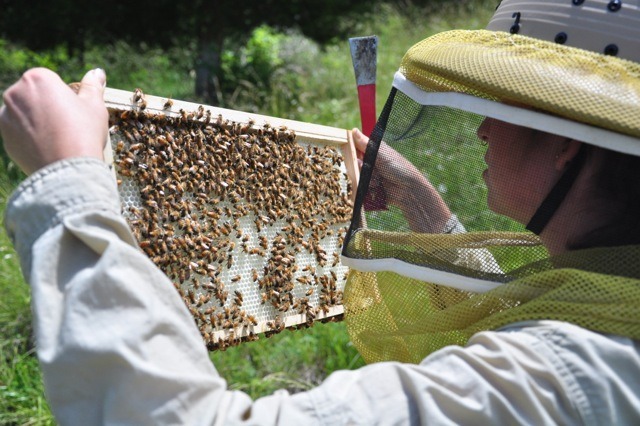Farmers and humans think they are pretty clever these days, but not clever enough to take responsibility for the pollination of $30 billion worth of nourishing food crops each year; currently a task taken happily by Honey Bees. Important work is being done to determine what is devastating the population of apis mellifera; but do Americans want to wake up from the Dream yet?
Everything is connected. “Crop Pollination Exposes Honey Bees to Pesticides Which Alters Their Susceptibility to the Gut Pathogen Nosema ceranae”, the title reads on a recently released PLOS|one publication. A group of six researchers wanted to determine “how pesticide exposure and pathogens may interact to have strong negative effects on managed honey bee colonies.” After collecting pollen from foraging bees flying from nine hives servicing seven crops, the experimenters from the University of Maryland (College Park) found thirty five types of pesticides, as well as high fungal loads, contributing to a diverse array of sub-lethal effects on the bee population; effects include altering enzyme activity, developmental problems, oviposition behavior , offspring sex ratios, mobility, navigation and orientation, feeding behavior, learning and immune function, and probably more! Ultimately, the group claims this is the first demonstration of “how real world pollen-pesticide blends affect honey bee health.”
Back in 2011, the EPA released updated sales and usage numbers on the Pesticides Industry, but only up through 2007. Those figures indicated pesticide use in agriculture was “down slightly” from 948 million pounds in 2000 to 877 million pounds in 2007; a decline of about 1% annually, but still close to a billion pounds of toxic chemicals introduced into eco-systems each year. In 2012, Science published multiple findings implicating common neonicotinoid insecticides in the decline of bee populations. Experiments showed that these pesticides “occur at trace levels in the nectar and pollen of crop plants” and that non-lethal exposure causes “high mortaility rate due to homing failures that could put a colony at risk of collapse.”
Many go about their lives oblivious to the anthropogenic alteration of eco-systems, and still more do not even know what that last line even means. For more than half a century, American farmers have been using pesticides, fungicides, and other chemical (as well as labor) short-cuts to gain higher crop-yields, while a growing population is distracted by brand hype and fast-food like consumption. Meanwhile, it is becoming apparent that the peril of bees is integrally link to the actions of humans, and the very food supply we are trying to grow may be in jeopardy.

Produce Choices With Bees

Produce Choices without Bees
So what is the solution? Everybody wants a short and easy answer, but honestly there is not just one. There are a litany of things that could be done to shift the landscape: elimination of toxic chemicals from the list of options available to farmers, declines in meat consumption (impacting pesticide and chemical fertilizer use, also correlated with the dead-zones around the globe), halting fossile fuel dependence (which is impacting the climate, which is impacting, shifting, and contributing to the decimation of bee populations), stringent food labeling regulations to inform consumers on how their food is grown and where, education efforts to instill the values of environmental stewardship. The study points out pollinators were drawn not only to the crops in which farmers were growing nearby, but also to natural growth areas around farms. Experimenters suggested beekeepers “consider not only pesticide regimens of the fields in which they are placing their bees, but also spray programs near those fields that may contribute to pesticide drift onto weeds.” Everything is connected, so planting a seed for the honey bee is a step in the right direction.


